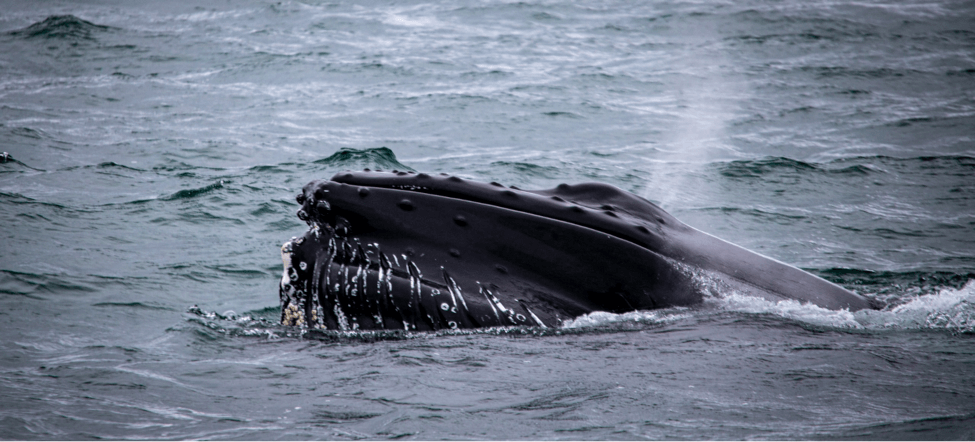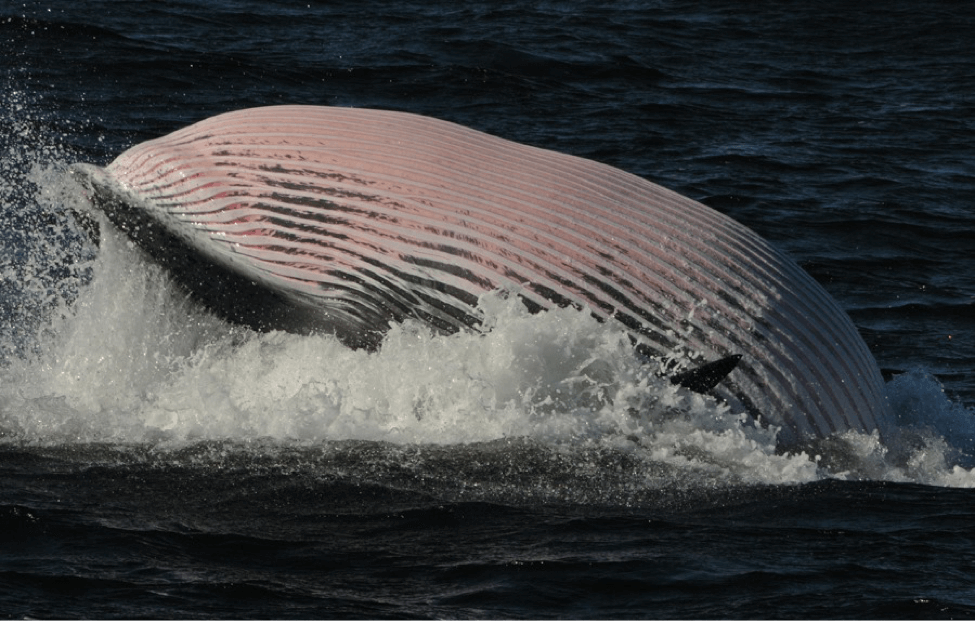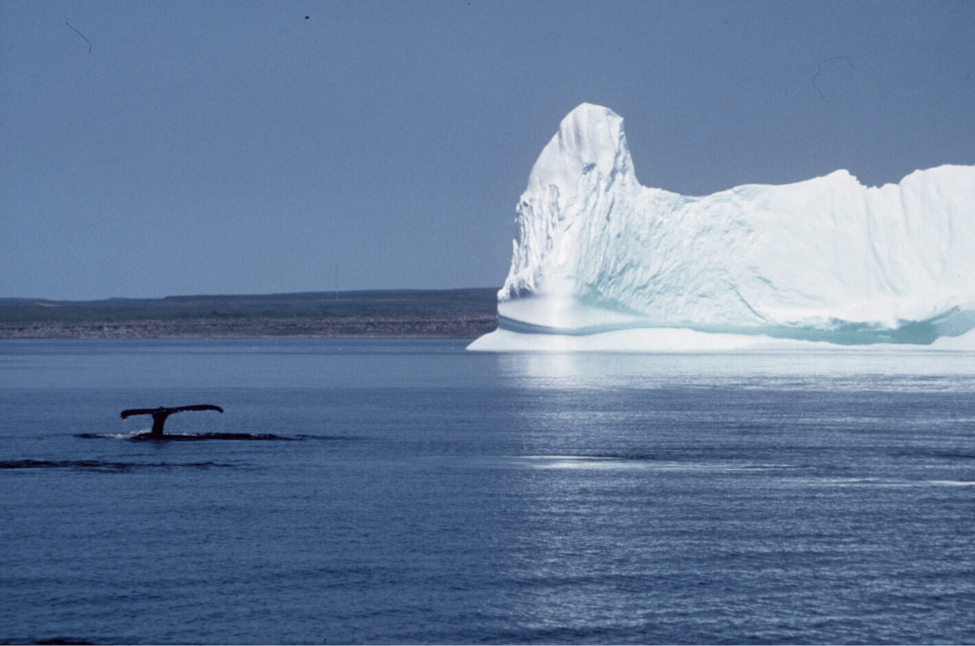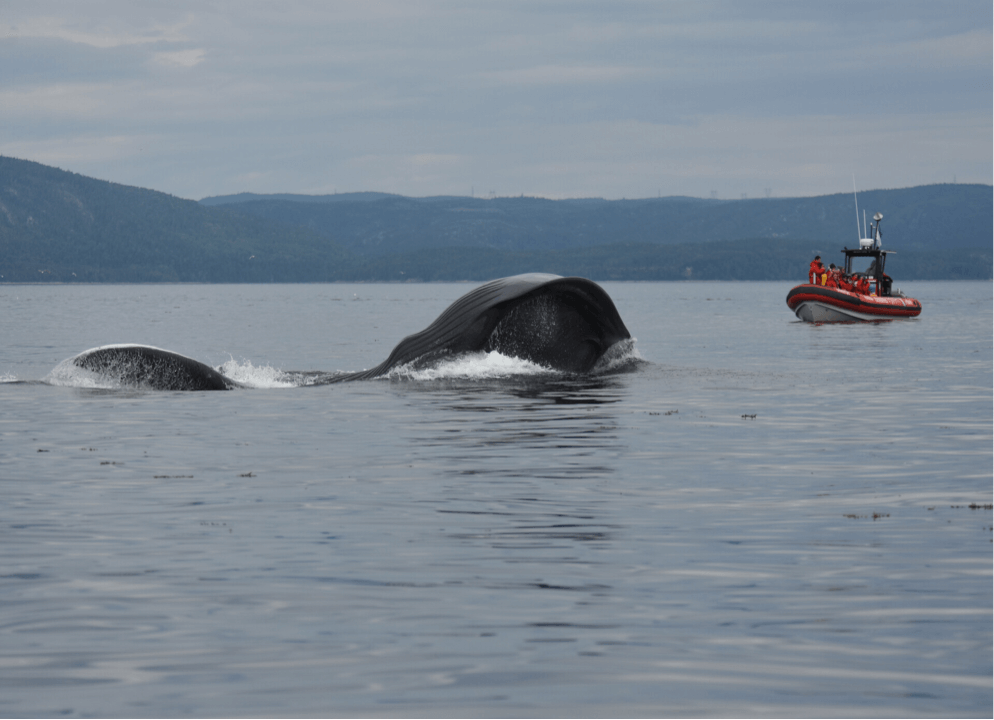As part of Science Literacy Week taking place from September 18 to 24 under the theme “Energy,” the Whales Online team is taking a closer look at the conservation of energy and heat in cetaceans. Let’s explore the various behavioural and physiological adaptations that allow these animals to live in occasionally icy waters without ever feeling the cold.
How are they able to do this when we humans have to put on multiple layers to withstand low temperatures? And why do they choose to venture into frigid waters rather than stay in the seemingly pleasant temperate seas of the South?
Thermoregulation
To understand the functions of these particular adaptations, we must first look at how cetacean metabolism works. Thermoregulation is the set of processes that allow an organism to maintain a constant body temperature. In whales, as in humans, this temperature is around 37℃. All mammals are endothermic organisms, meaning they regulate their body temperature through metabolic processes that allow them to produce, retain, or release heat. Thermoregulation is based on this balance between heat gains and losses.
The metabolic pathway for producing internal heat, thermogenesis, makes use of the energy released by muscular contractions (during movement, for example) and from the metabolic activities of the organs to maintain a constant body temperature.
Heat losses and gains are caused by a temperature difference between the whale’s skin and its environment. When the environment (water or, occasionally, air) is cooler than the mammal’s skin temperature, heat naturally moves toward the colder environment. The opposite is also true when the environment (in this case the air when the whale breaks the water surface) is warmer than the whale’s skin.
However, energy spent warming the body to compensate for heat loss is energy that cannot be dedicated to other tasks such as swimming, gestation or parental care. These energy expenditures can be life-threatening if an individual or its offspring is not well suited to its environment. In whales, the challenge is even greater since water, with a heat-conducting capacity 25 times higher than air, is a much more efficient thermal conductor! In marine mammals, body heat therefore diffuses much more easily toward the water, which is often substantially colder than their body temperature. This is why they had to develop numerous adaptations to minimize excessive heat loss.
Retaining heat with a coat of blubber
Whale blubber (article in French) is a thick layer of fatty tissues and proteins. Through its hydrodynamic-enhancing flexibility and buoyancy, blubber facilitates their movement and allows them to regulate their body temperature by acting as a thermal insulator. In baleen whales, it also serves as an energy reserve during their annual migrations when these animals can go without eating for weeks.
However, cetaceans that live in cold waters year-round (e.g. belugas) do not use their blubber in exactly the same way. They use it more as a genuine protection against freezing temperatures. As they do not fast for any prolonged period, these northern whales do not need to draw from their fat reserves.
However, cetaceans that live in cold waters year-round (e.g. belugas) do not use their blubber in exactly the same way. They use it more as a genuine protection against freezing temperatures. As they do not fast for any prolonged period, these northern whales do not need to draw from their fat reserves.
The adipose cells that compose blubber fill up with fatty material as a function of the body’s energy needs and food availability. The thicker the layer of blubber, the more the body can tolerate low temperatures without having to expend additional energy to stay warm.
Minimizing heat loss with the rete mirabile
In addition to their coat of blubber, cetaceans have in their extremities a complex labyrinth of arteries and veins called the rete mirabile that enables them to balance the heat distribution throughout their bodies via countercurrent heat exchanges (article in French). If this were not the case, whales’ pectoral, dorsal and caudal fins – the only parts of their body that do not have insulating blubber – would generate significant heat loss.
Under the coat of blubber there is also a tangle of bridges connecting arteries and veins to keep the blood warm. Furthermore, some cetaceans have few or no valves along their veins to regulate blood flow. This absence facilitates blood circulation and allows blood to be rapidly channelled to the organs whenever necessary.
Why stock up on energy?
The majority of baleen whales do not feed during their migrations to their breeding grounds, where they mate and females give birth. Evidently, they need energy to complete this long journey, energy that they get from their coat of blubber. Some females will also have to meet the energy needs of their calf that will undertake the trek at its mother’s side. Their fat reserves will be used – in addition to substituting their usual source of energy – to produce rich milk for their calves.
Why migrate?
Although whales can also feed in tropical waters, the latter contain significantly less krill and other choice food resources than those farther north, which, once warmer weather sets in, teem with prey thanks to summer blooms. It would therefore be more energy intensive for them to feed in their wintering grounds. In fact, the energy required to find and ingest their meal is believed to exceed the limited energy gain that such a meal would provide. Ultimately, it therefore makes more sense for whales to travel for weeks across the oceans to cold waters that swarm with schools of prey.
Additionally, baleen whales must migrate to warmer waters in winter, despite the fact that the latter contain fewer food resources, to allow their newborn calves to stay warm. Because their blubber layer is not as thick, they are more susceptible to heat loss in cold water.
For whales, energy is an invaluable resource for thriving in such an inhospitable environment. The true key to their success therefore lies in conserving this precious energy by optimizing their energy expenditures.











